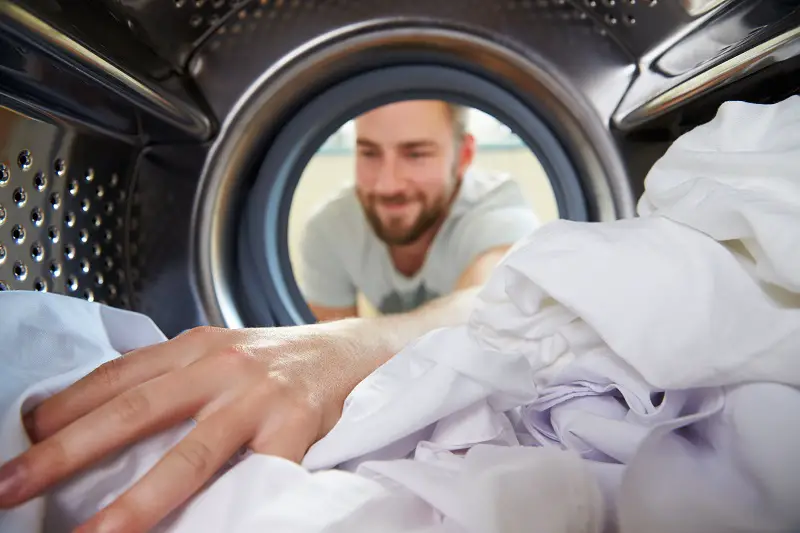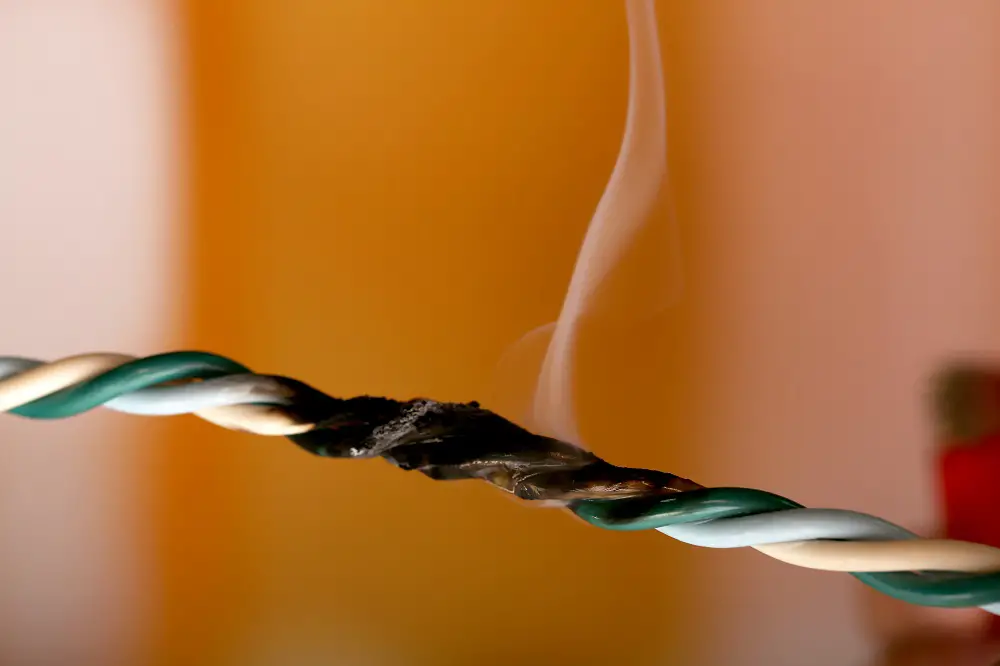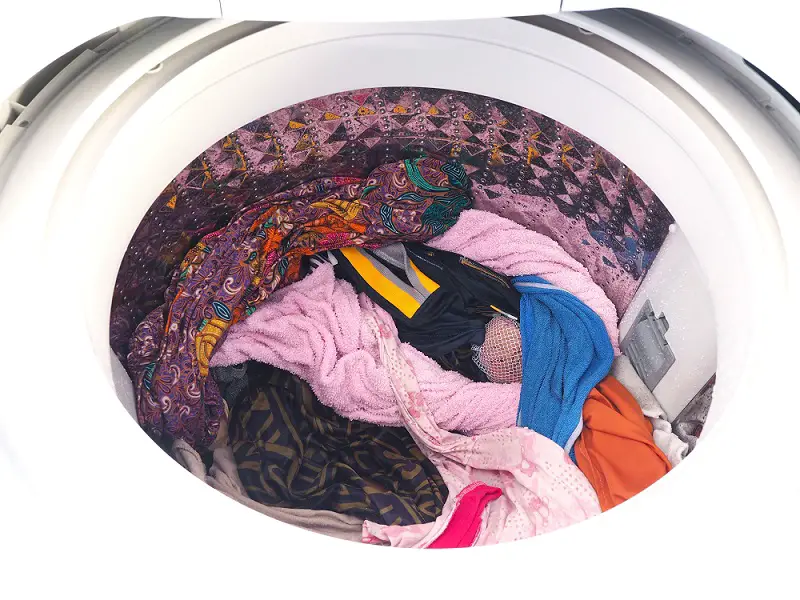Portable dryers are slightly different from standard dryers and work differently. However, most portable electric dryers dry clothes the same way traditional dryers do.
The portable dryer is connected to an electrical socket; when turned on, the heating element warms, creating heat in the dryer. When the dryer gets hot, a fan inside the portable dryer blows heat further into the dryer, tumble-drying the clothes.
The process may vary for different portable dryers.
Key Takeaways
- Portable spin dryers only spin and don’t heat
- Portable tumble dryers work like normal tumble dryers
- Wardrobe dryers only use heat
- Most portable dryers don’t need a classic vent (but some do have a sort of)
- Portable dryers are good for tiny spaces and small amounts of laundry
- Portable dryers do have a moisture problem and aren’t efficient for full loads
Table of Contents
Principle of Portable Dryers
Portable dryers come in two main categories: spin-drying and tumble-drying.
Another compact, portable electric dryer option is a small wardrobe dryer that works differently from the other two types of portable dryers.
Spin Dryers
Spin dryers are much smaller than regular clothes dryers and use centrifugal force instead of heat to dry clothes.

These compact dryers mostly plug into a standard power outlet, and the clothes spin at about 3200 revolutions per minute (rpm) for about 2-3 minutes. The amount of water removed from the clothes is how much a conventional dryer would remove in 25-35 minutes.
A spin dryer might be a faster and more energy-efficient alternative; however, it won’t completely dry the laundry.
Tumble Dryers
The portable tumble dryers tumble like a full-sized dryer, with the electrical current heating up the metal coil and creating heat. This heat is then blown by a fan further into the dryer, drying the tumbling clothes.

An electric motor rotates the drum with the wet laundry while the fan circulates hot air through the drum.
The circulating hot air evaporates the water from the clothes.
Wardrobe Dryers
The wardrobe-type portable clothes dryers heat the internal air to achieve the effect of drying clothes. They are among the best portable dryers giving you the biggest flexibility and allow drying clothes anytime, anywhere.

Such a clothes dryer makes high-temperature airflow over the clothes’ surface. As a result, the moisture in the clothes evaporates into water vapor, thus drying the clothes. Commonly used heating methods include semiconductor heating, electric, and wire heating.
The ones with semiconductor heating automatically adjust their power as per the ambient temperature.
Do Portable Dryers Need a Vent?
Most portable dryers don’t require a venting hose connected to a window or fixed outlet. Excessive moisture is eliminated through the surrounding air or collected inside the machine. Some types have a water outlet or a vent to deal with excess heat and dryer lint.
Vented portable clothes dryers need a vent to discharge the water vapor that evaporates from the clothes by heating.
The ventless portable dryers don’t require a vent. They work by heating the surrounding air first and then using the hot air to dry the laundry. A condensation device in these dryers condenses the water emitted from the clothes into water vapor and collects it. The water vapor isn’t directly exhausted through the vent.
Heat pump portable clothes dryers don’t require a vent either. They don’t discharge water vapor into the room as they’re equipped with a condensing device and a water collection box. There is repeated circulation of the heat generated, with a high drying efficiency.
Pros and Cons of Portable Dryers
Here are some pros and cons of portable electric dryers, with the pros outweighing the cons for small amounts of laundry.
Pros
- Small Size
- Energy Saving (per application)
- Less time needed
- Wrinkle-free (depending on the dryer)
- More efficient (for small amounts)
- Less expensive (for small amounts)
Cons
- No 100% laundry drying
- Small load capacity
- Indoor venting problems
Size
The small portable dryers are easy to store away when not in use. With a small footprint, it’s easy to use in cramped apartments, cabins, hotels, and RVs. It’s also useful for people who often move yet, prefer to bring their dryer to their new home. Some models even come with a wall mounting kit.
Full-sized dryers occupy about 7.3 cubic feet of space, while portable dryers occupy between 1.5 – 3.5 cubic feet.
Energy Saving
A portable dryer, especially energy-efficient models (with ENERGY STAR certification), helps reduce energy bills. While the spin dryers, which work by spinning instead of heating, may not dry well, they use less electricity and keep the indoor space temperature lower.
It reduces the electricity, or natural gas used to dry small amounts of clothes.
Less Time and Space
A portable dryer is a small machine with less drying time and less space indoors than a typical clothesline or drying rack. It can also be wheeled around for use and storage; a good option if you don’t have a permanent space for a dryer. However, ventless models take longer to dry than vented models.
Read more on how long the portable dryer cycles are.
Wrinkle-free
Most portable dryer models keep your laundry fluffy and wrinkles-free, eliminating the need to iron afterward. Some models even have an anti-wrinkle option; the hanger-style dryers have the benefit of fewer wrinkles.
(Many modern static tumble dryers do have this option too, depending on the model and year of manufacturing)
More Efficient
Besides being energy efficient, portable spin dryers are often much gentler on clothes than conventional dryers.
Less Expensive
Using a portable dryer eliminates trips to a laundromat or communal laundry facility. Spin dryers are less expensive to purchase than regular dryers.
No 100% Laundry Drying
The laundry isn’t generally 100% dried with spin dryers and needs to be tossed into a conventional tumble or heat dryer. The other option is to hang the clothes to dry. Overloading the machine will result in a much longer drying time.
In comparison, wardrobe (rack) style dryers or electric dryers have longer drying cycles than spin dryers.
Small Loads Capacity
This is one of the biggest downsides of these portable appliances. You can fit about half the clothes into a portable dryer compared to a traditional dryer. Most portable electric dryers’ load holds between 5 – 13 pounds of laundry, varying between different models. This is ideal for one- or two-person households.
Indoor Venting Problems
Indoor venting causes excess heat release, which can increase cooling costs. The increase in humidity levels indoors leads to mold growth. Lint and debris accumulated in the dryer vent is a fire hazard because of the heat generated.
Portable Dryers vs. Regular Dryers
There are a few similarities and differences between portable and regular dryers.
| Portable Dryers | Regular Dryers | |
|---|---|---|
| Interior space | 1.5-3.5 cubic feet | ~7.3 cubic feet |
| Voltage req. | 120V or 240V | 120V or 240V (240V is more common) |
| Cost | Spin: $150-$200 Wardrobe: $60-$100 Electric: $250-$500 | Gas: $500-$750 Electric: $400-$600 High-end: $1200-$1600 |
| Drying time | ~2 hours | 30-45 minutes for a full load; 1 hour for dense fabrics (eg towels) |
| Load Capacity | 5-13 pounds | 12-20 pounds |
| Drying cycles | ~ 3-4 cycles in electric dryers | 9-14 cycle options |
A portable dryer can be convenient when you’re tight on space or regularly on the move. These are energy-efficient and range from some models having four drying modes, vented or ventless types, being stackable, and even being able to be wall-mounted.
However, maintenance is required for portable dryers just as much as regular ones, with the lint filters and vents (for vented models) requiring cleaning after every few cycles.
Also, portable dryers tend to last a little shorter. Read this article for the details on their longevity.
Conclusion
Portable electric dryers do have different working principles that do have specific pros and cons. Most of them can dry small amounts of laundry quite efficiently while they are ineffective for full loads.
The spin dryer doesn’t fully dry the laundry but is ideal for saving money because it eliminates excessive water fast and efficiently to prepare for the final drying.
Portable dryers without a vent may cause some moisture problems in an apartment or small space. You should consider this when buying and have a viable option to release the moist air.



